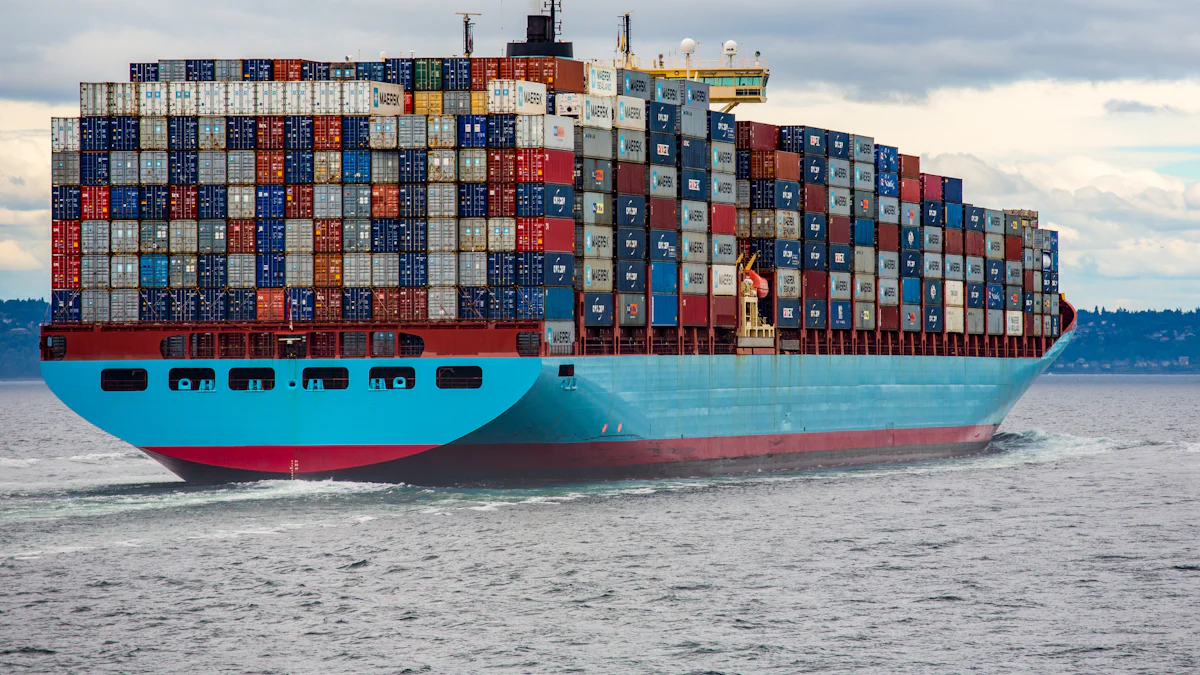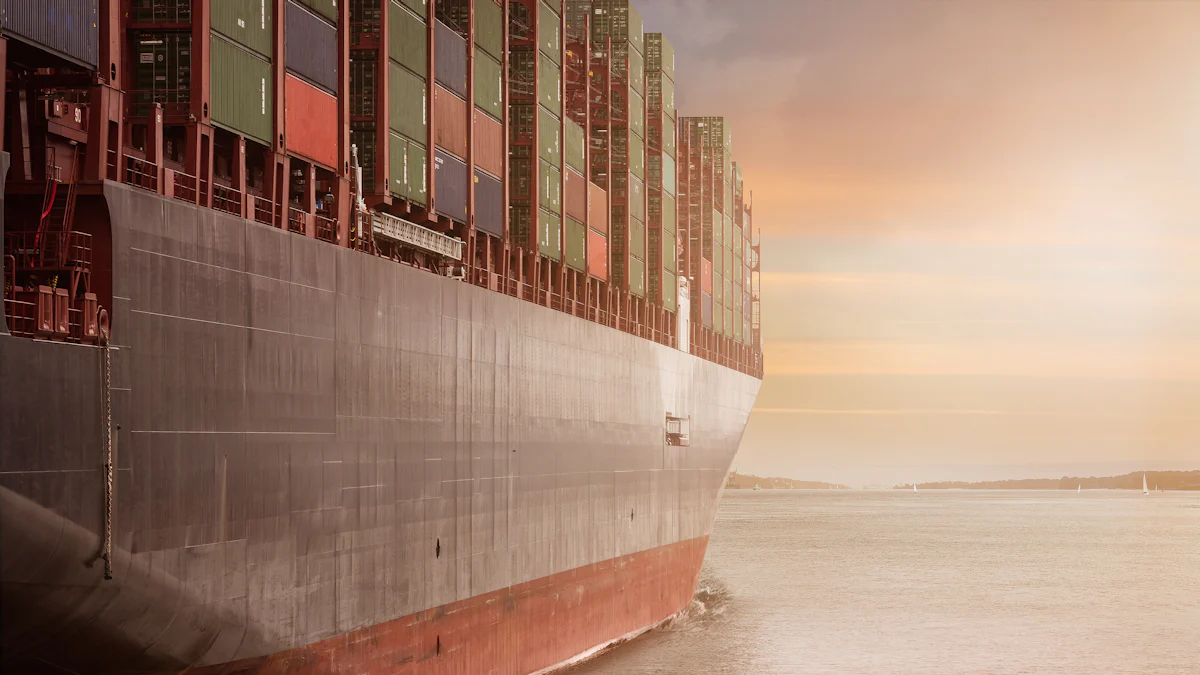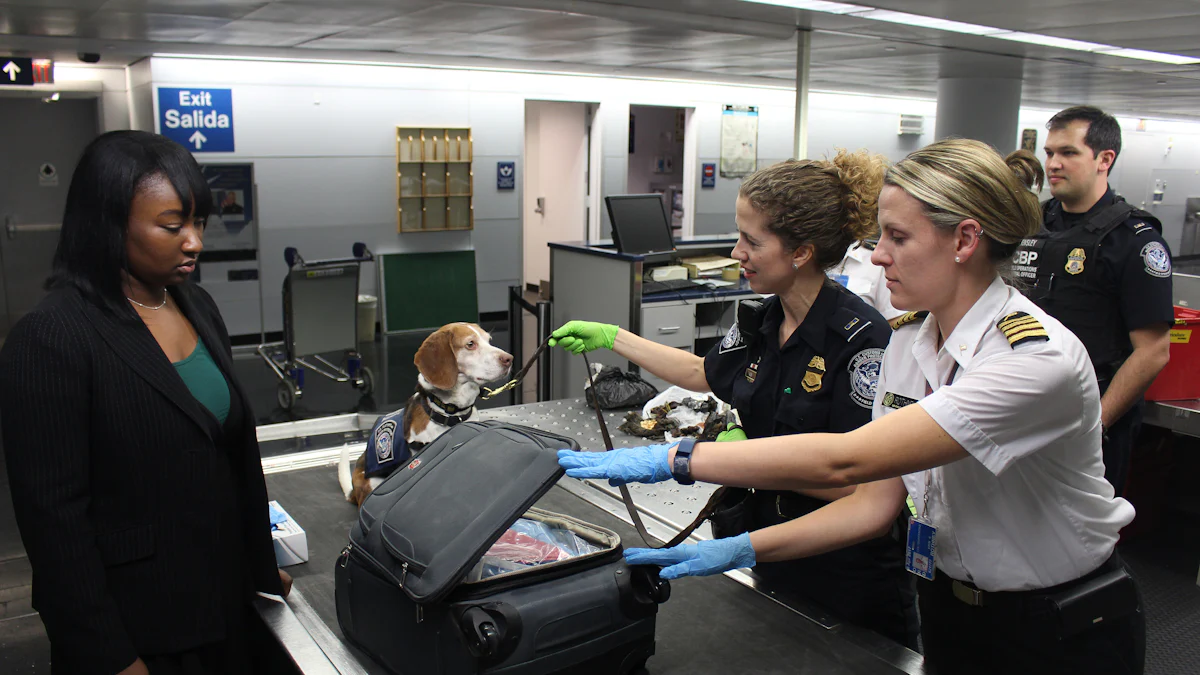How to Ship Goods via Ocean Freight: Detailed Steps

In recent times, there has been a consistent increase in the volume of global maritime trade. Specifically, the figures stood at 11 billion tons in 2021, escalated to 12 billion tons in 2022, and are forecasted to further climb to 12.4 billion tons in 2023. This upward trajectory serves not only as an indicator of the global economy's robustness, but also underscores the pivotal position that maritime shipping holds within the framework of international trade.
Choosing ocean freight offers several benefits:
Lower transportation costs
Ability to ship large quantities
Reduced environmental impact compared to air freight
Understanding these advantages helps businesses make informed shipping decisions.
Preparing for Shipment

Understanding Shipping Requirements
Documentation Needed
Shipping goods via ocean freight requires several key documents. The commercial invoice lists contact information for the shipper and receiver, export date, and airway bill number. A bill of lading (BOL) is essential for compensation in case of damage, delay, or loss. It provides a tracking number and includes international shipping details.
A packing list itemizes the contents of each package. This list helps customs officials verify the shipment's contents. The shipper’s letter of instructions guides the freight forwarder on how to handle the shipment. The certificate of origin verifies where the goods were manufactured.
"Proper documentation ensures smooth customs clearance," says an expert in international shipping.
Compliance with Regulations
Compliance with regulations is crucial when shipping via ocean freight. Each country has specific import and export rules. Shippers must adhere to these regulations to avoid delays or fines.
The Automated Export System (AES) filing is mandatory for U.S. exports valued over $2,500. This electronic declaration informs U.S. Customs about the shipment details. Safety Data Sheets (SDS) are necessary for hazardous materials to ensure safe handling during transport.
Choosing the Right Freight Forwarder
Evaluating Experience and Reputation
Selecting a reliable freight forwarder can make or break your shipping experience. Evaluate their experience in handling similar shipments. Look at customer reviews and testimonials to gauge their reputation.
"A good freight forwarder acts as an extension of your logistics team," says a seasoned shipper.
Comparing Services and Costs
Compare services offered by different freight forwarders. Some may provide additional services like warehousing or insurance that could benefit your business needs.
Cost comparison is also vital when choosing a freight forwarder for ocean freight shipments:
Request quotes from multiple providers.
Analyze what each quote includes.
Consider both cost-effectiveness and service quality.
Packaging and Labeling
Ensuring Proper Packaging
Proper packaging protects goods during transit by sea:
Use sturdy boxes or crates.
Cushion items with bubble wrap or foam.
Seal packages securely with strong tape.
Packaging should withstand rough handling during loading/unloading processes involved in ocean freight transportation.
Labeling for International Shipping
Labeling plays an important role in international shipping:
Include clear addresses for both sender/receiver.
Attach relevant shipping labels provided by your carrier.
Mark packages as fragile if they contain delicate items.
Labels must comply with international standards so customs officials can easily identify shipment details without confusion.
Booking the Shipment
Selecting the Shipping Route
Choosing the right shipping route is crucial for ocean freight. Different routes offer various benefits and challenges.
Direct vs. Transshipment Routes
Direct routes transport goods from the origin to the destination without stopping at intermediate ports. This method ensures faster delivery and fewer risks of delays or damages. Businesses that prioritize speed and reliability often prefer direct routes.
Transshipment routes involve transferring cargo between vessels at intermediate ports. This option provides flexibility in accessing more destinations and frequent sailings. However, transshipment can lead to longer transit times and potential delays due to vessel changeovers.
"Direct shipment can outweigh costs for businesses valuing speed, security, and reliability," says a logistics expert.
Transit Time Considerations
Transit time plays a significant role in selecting a shipping route for ocean freight. Direct routes generally have more predictable schedules and estimated arrival times. This predictability helps businesses plan their supply chain effectively.
Transshipment routes may have less stable transit times due to vessel changeovers at intermediate ports. Businesses must weigh the benefits of cost savings against potential delays when choosing transshipment.
Reserving Space on a Vessel
Securing space on a vessel is essential for successful ocean freight shipping. Understanding container types and booking procedures will help streamline this process.
Understanding Container Types
Different types of containers cater to various cargo needs:
Standard Containers: Suitable for most general cargo.
Refrigerated Containers (Reefers): Ideal for perishable goods requiring temperature control.
Open Top Containers: Used for oversized items that cannot fit in standard containers.
Flat Rack Containers: Perfect for heavy machinery or large equipment.
Selecting the appropriate container type ensures safe transport of goods via ocean freight.
Booking Procedures
Booking space on a vessel involves several steps:
Request quotes from multiple carriers.
Compare rates, services, and transit times.
Choose a carrier that meets your requirements.
Provide necessary shipment details like cargo type, weight, dimensions, and destination.
Confirm booking with the chosen carrier.
Timely booking helps secure space on desired vessels and avoids last-minute hassles during peak shipping seasons.
"Early planning ensures smooth sailing," advises an experienced shipper.
During Transit
Tracking the Shipment
Tracking a shipment during ocean freight transit ensures peace of mind. Knowing where cargo is at any given moment helps manage expectations and plan accordingly.
Using Tracking Tools
Many carriers offer online tracking tools. These tools provide real-time updates on the shipment's location. Enter the tracking number provided by the carrier to access this information. Some platforms also offer notifications for status changes, keeping shippers informed throughout the journey.
"Real-time tracking transforms shipping management," says a logistics expert.
Communicating with the Freight Forwarder
Regular communication with the freight forwarder is essential. Freight forwarders can provide additional insights beyond what online tools show. Contacting them directly can clarify any uncertainties about the shipment's status or address specific concerns.
Managing Delays and Issues
Delays and issues can arise during ocean freight transit. Being prepared to handle these situations minimizes disruptions.
Common Problems and Solutions
Several common problems may occur:
Weather Delays: Severe weather conditions can delay vessels. Monitoring weather forecasts helps anticipate potential delays.
Port Congestion: Busy ports may cause unloading delays. Choosing less congested ports or planning shipments during off-peak times reduces this risk.
Customs Hold-ups: Incomplete or incorrect documentation can lead to customs delays. Ensuring all paperwork is accurate and complete prevents such issues.
"Preparation is key to overcoming shipping challenges," advises an experienced shipper.
Insurance and Claims
Insurance provides financial protection against unforeseen events during ocean freight transit:
Purchase comprehensive insurance coverage for valuable or fragile goods.
Document any damage upon receipt of goods.
File claims promptly with detailed evidence, including photos and descriptions of damages.
Insurance claims ensure compensation for losses, making it easier to recover from unexpected setbacks.
Arrival and Customs Clearance

Preparing for Arrival
Notifying the Consignee
Notifying the consignee about the shipment's arrival is crucial. The consignee needs to know when and where to expect the goods. This notification helps them prepare for receiving the shipment. Contacting the consignee early can prevent delays in picking up the cargo.
"Early communication with consignees ensures smooth delivery," says a logistics expert.
Arranging for Pickup
Arranging for pickup involves coordinating with local carriers or transport services. The consignee must schedule a time to collect the goods from the port or warehouse. Proper planning ensures that trucks or other vehicles are available when needed. This step avoids storage fees and keeps the supply chain moving efficiently.
Customs Clearance Process
Customs clearance can seem daunting, but understanding each step makes it manageable.
Submitting Required Documents
Submitting accurate documents is essential for customs clearance:
Commercial Invoice: Lists details like shipper, receiver, and value of goods.
Bill of Lading (BOL): Provides tracking information and shipping details.
Packing List: Itemizes contents of each package.
Certificate of Origin: Verifies where goods were manufactured.
Properly filled-out invoices and packing lists ensure quick customs processing. Some regions may also require a proforma invoice to facilitate clearance.
"Accurate documentation speeds up customs procedures," notes an experienced shipper.
Paying Duties and Taxes
Paying duties and taxes is an unavoidable part of importing goods:
Calculate duties based on declared value and tariff codes.
Submit payment through authorized channels.
Keep receipts as proof of payment.
Understanding local tax regulations helps avoid unexpected costs. Ensuring all payments are made promptly prevents delays in releasing shipments from customs.
"Knowing duty rates ahead of time helps budget for import costs," advises a trade specialist.
By following these steps, businesses can navigate arrival and customs clearance smoothly, ensuring their goods reach their final destination without unnecessary delays or complications.
Final Delivery
Transporting to Final Destination
Choosing Local Transport Options
Selecting the right local transport option ensures smooth delivery. Businesses can choose from various methods:
Trucking: Ideal for short distances and flexible schedules.
Rail: Suitable for heavy loads over long distances.
Air Freight: Best for urgent deliveries, though more costly.
Each option offers unique benefits. Consider factors like cost, speed, and cargo type when making a choice.
Coordinating with Local Carriers
Coordination with local carriers is crucial. Contact carriers early to schedule pickups. Provide detailed information about the shipment. This includes weight, dimensions, and destination address.
"Early coordination prevents last-minute issues," advises a logistics expert.
Ensure that carriers have the necessary equipment to handle the goods. Confirm pickup times and locations to avoid delays.
Confirming Delivery
Inspecting the Goods
Inspecting goods upon arrival is essential. Check for any signs of damage or tampering:
Look at packaging for tears or dents.
Verify that seals remain intact.
Open packages carefully to inspect contents.
Document any issues immediately. Take photos and note specific damages.
"Thorough inspection helps identify problems early," says an experienced shipper.
Completing Delivery Documentation
Completing delivery documentation finalizes the shipping process. Ensure all paperwork reflects accurate details:
Delivery Receipt: Confirms that goods arrived in good condition.
Bill of Lading (BOL): Verifies shipment details and tracking numbers.
Customs Documents: Shows proof of clearance and duty payments.
Sign all documents after verifying their accuracy. Keep copies for records and future reference.
"Accurate documentation ensures a smooth end to the shipping journey," notes a trade specialist.
Following these steps guarantees successful final delivery of goods via ocean freight. Proper planning and attention to detail make this complex process manageable and efficient.
Shipping goods via ocean freight involves several crucial steps. Proper documentation, compliance with regulations, and selecting the right freight forwarder are essential. Packaging and labeling must meet international standards to ensure safe transit.
For a smooth shipping experience:
Plan ahead: Early booking secures space on desired vessels.
Communicate effectively: Regular updates with the consignee and freight forwarder prevent misunderstandings.
Prepare for contingencies: Insurance and accurate documentation help manage delays or issues.
Seeking professional assistance can simplify the process. Experts like JUSDA provide reliable, efficient solutions. Their expertise ensures timely delivery and peace of mind for shippers.
See Also
Revealing Top Global Logistics Companies: The Definitive Guide
2024 Sea Freight Logistics Update: What's Uncovered?
Maximizing Savings in Logistics: The Complete Handbook
Analyzing the Future of Less-Than-Truckload Freight
Expert Strategies for Overcoming Automotive Supply Chain Hurdles
